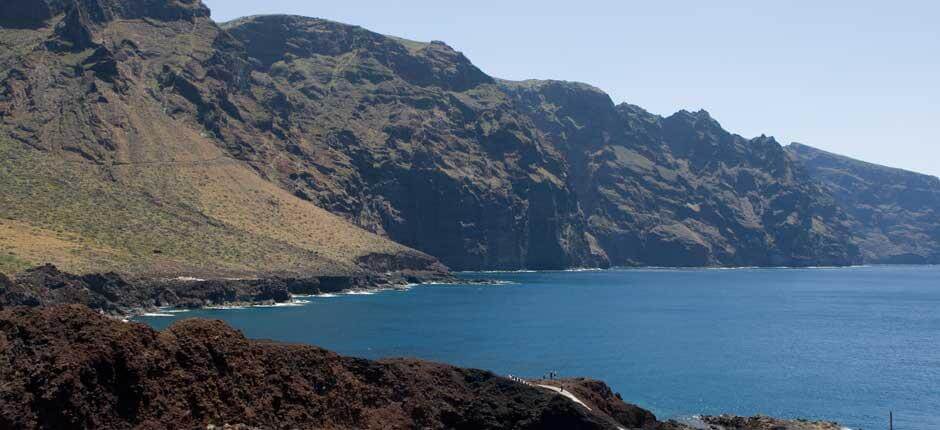

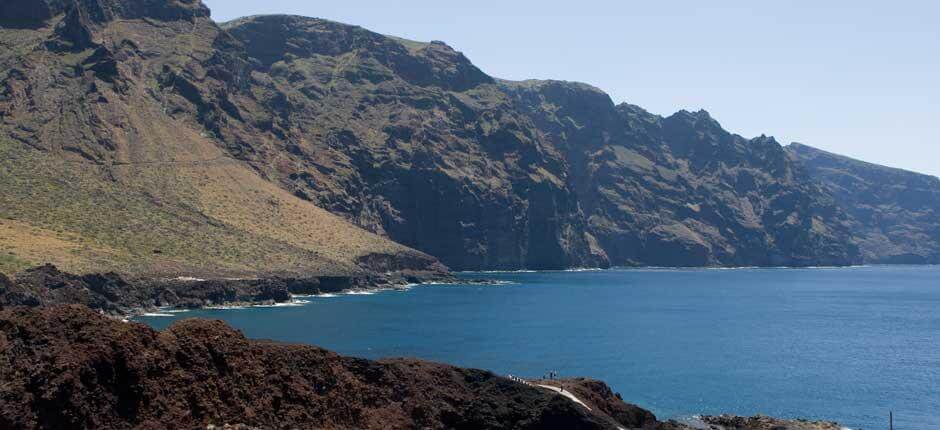
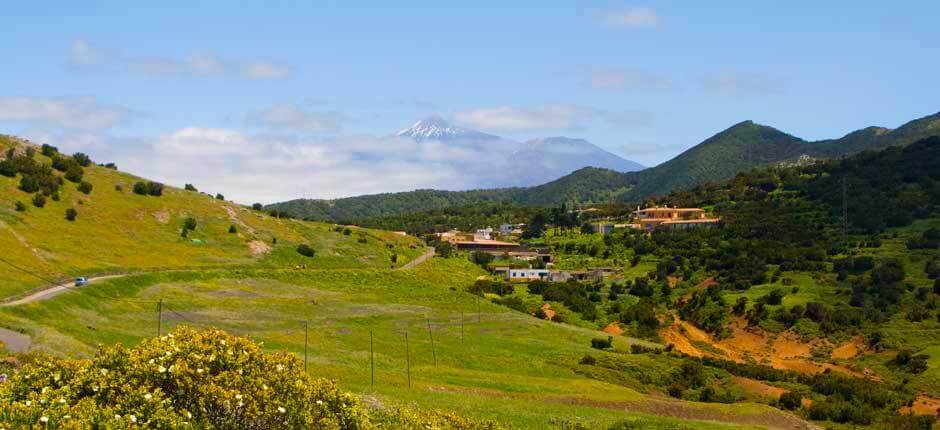

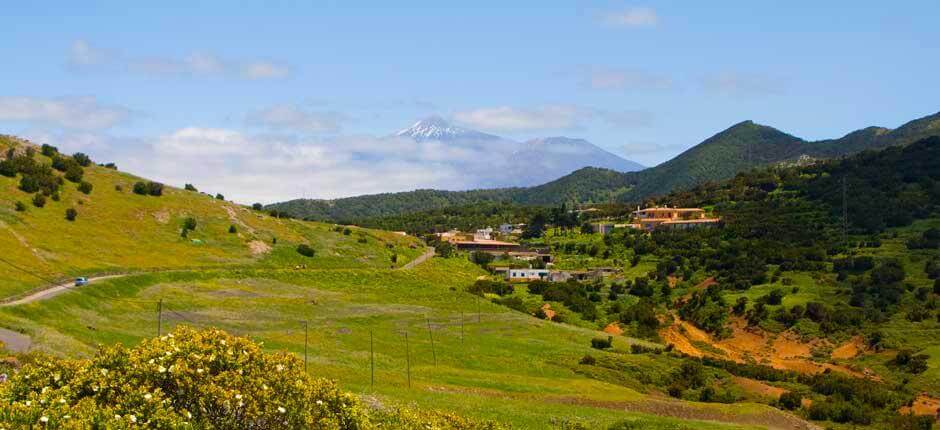
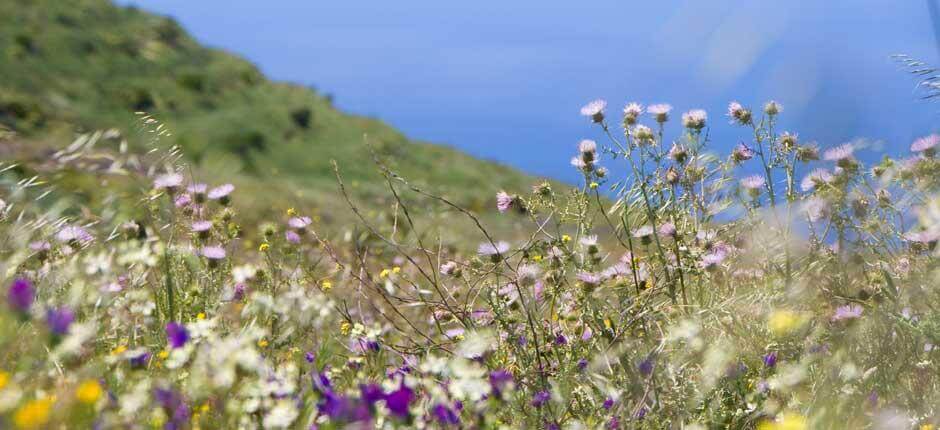

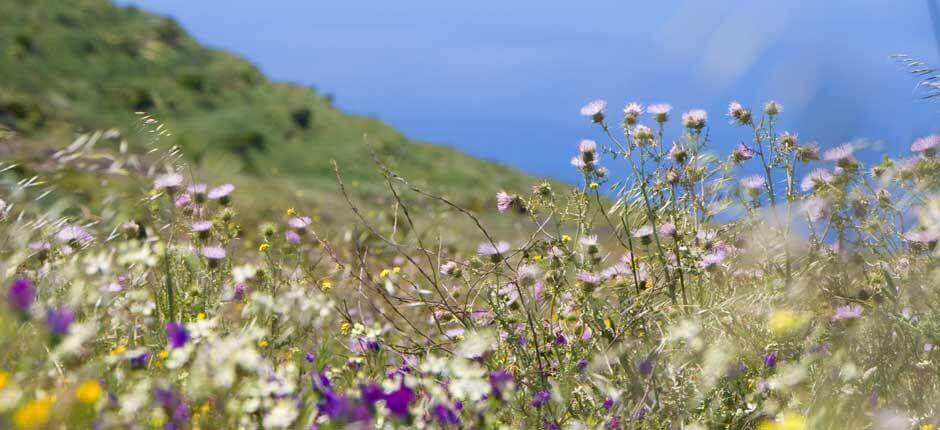
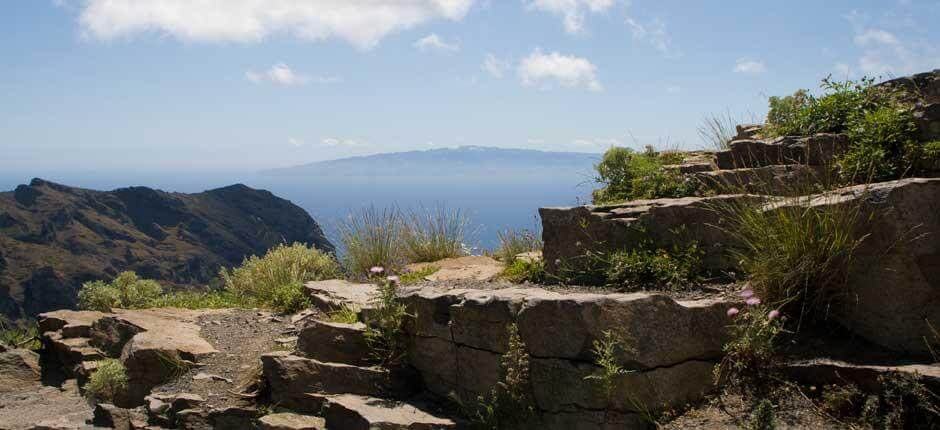

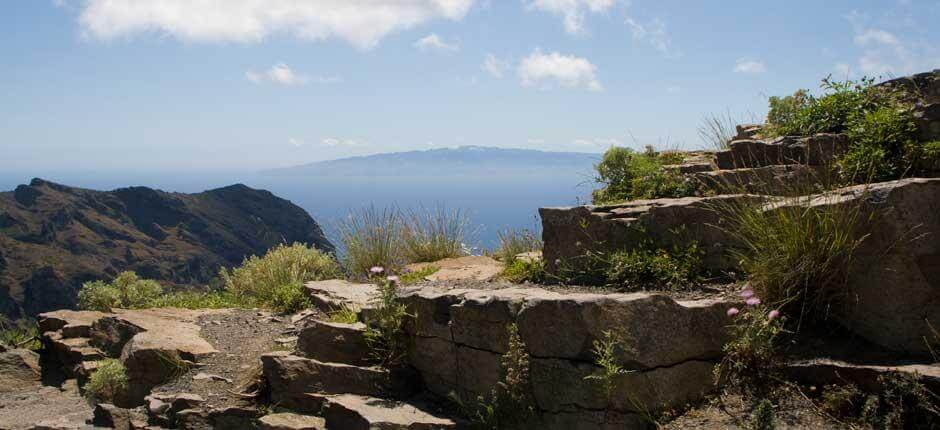
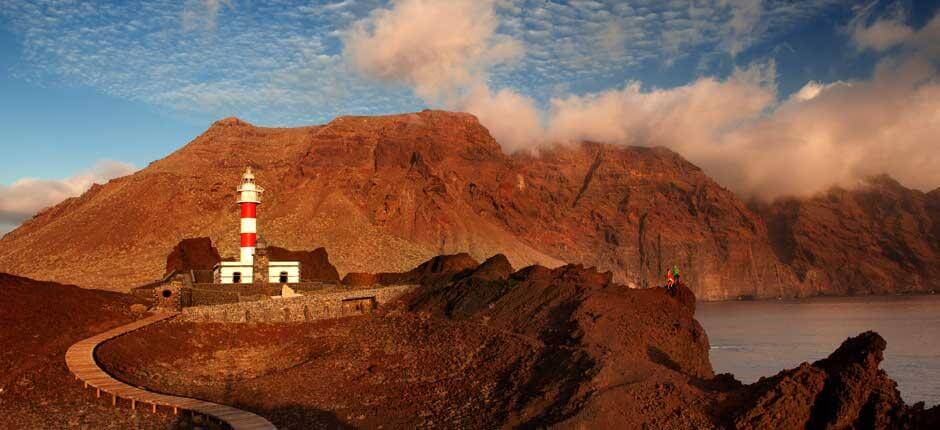

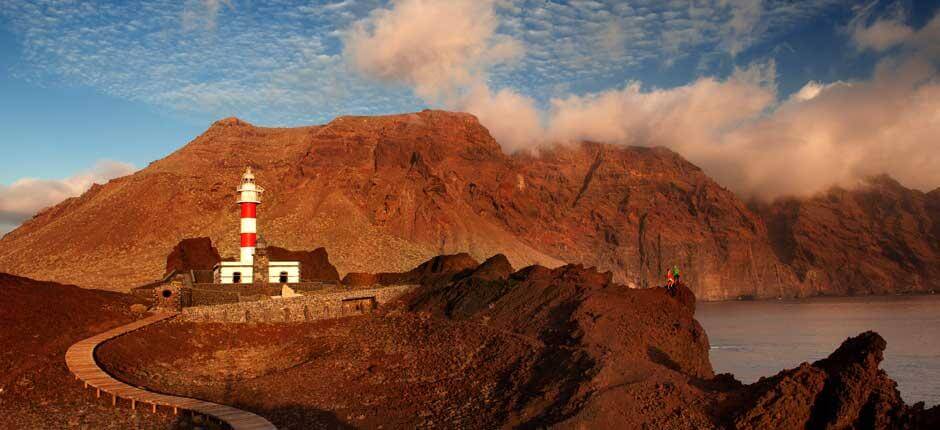
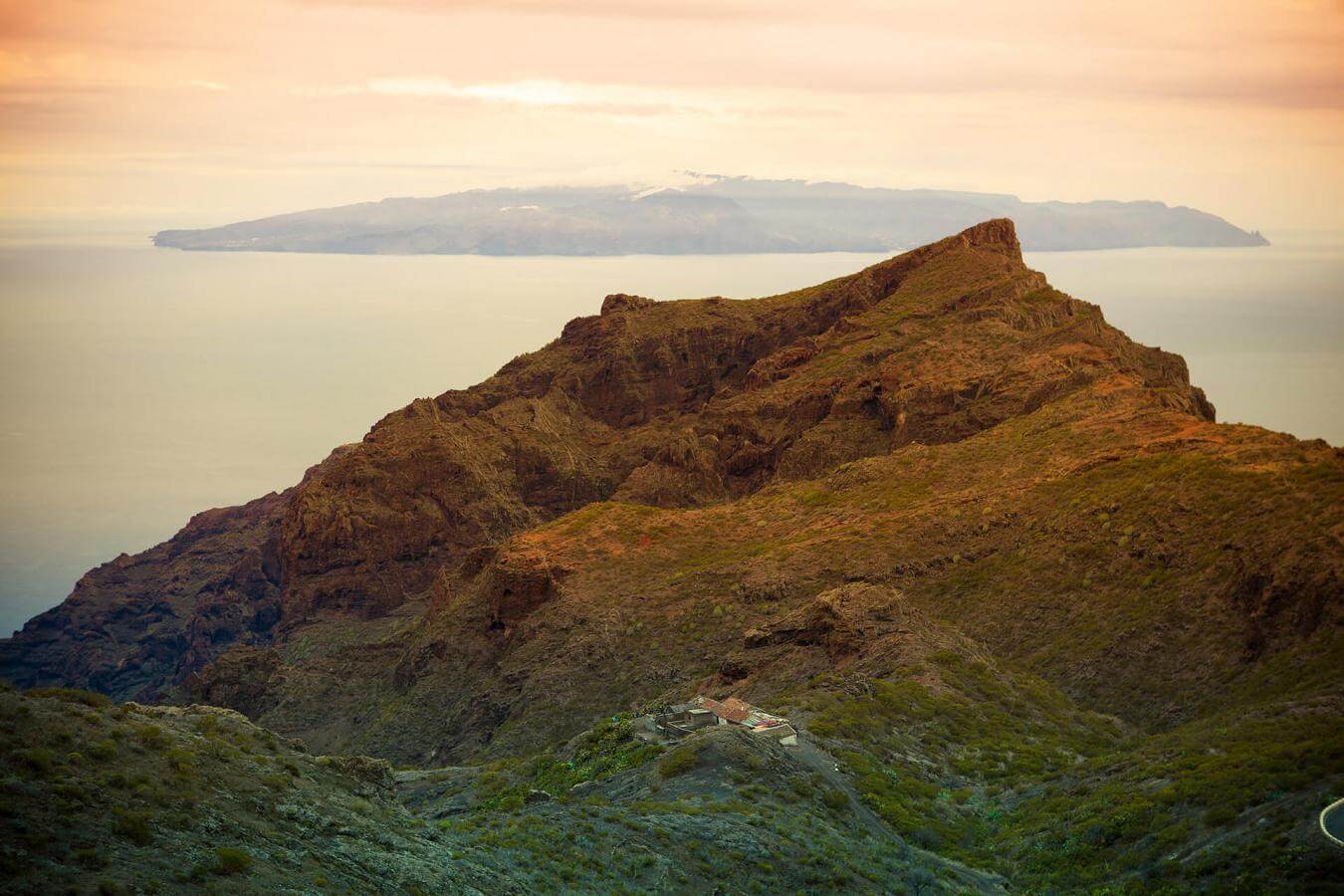

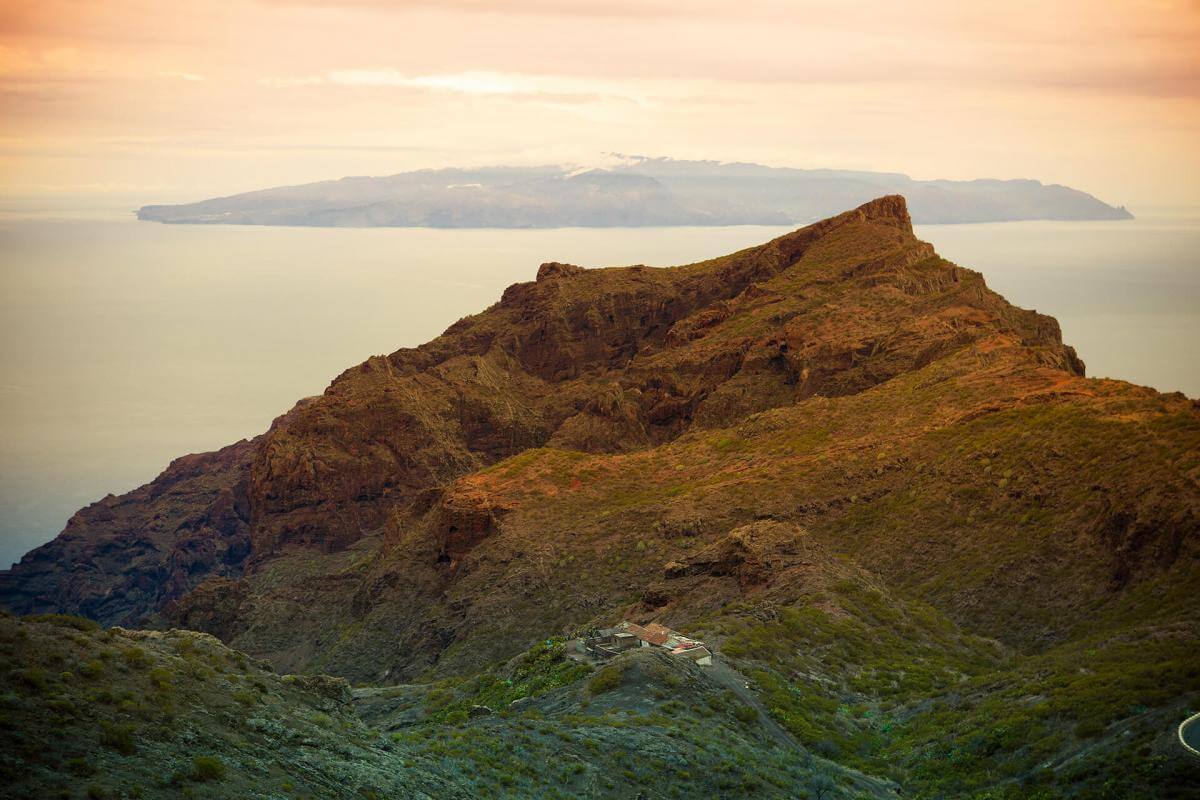
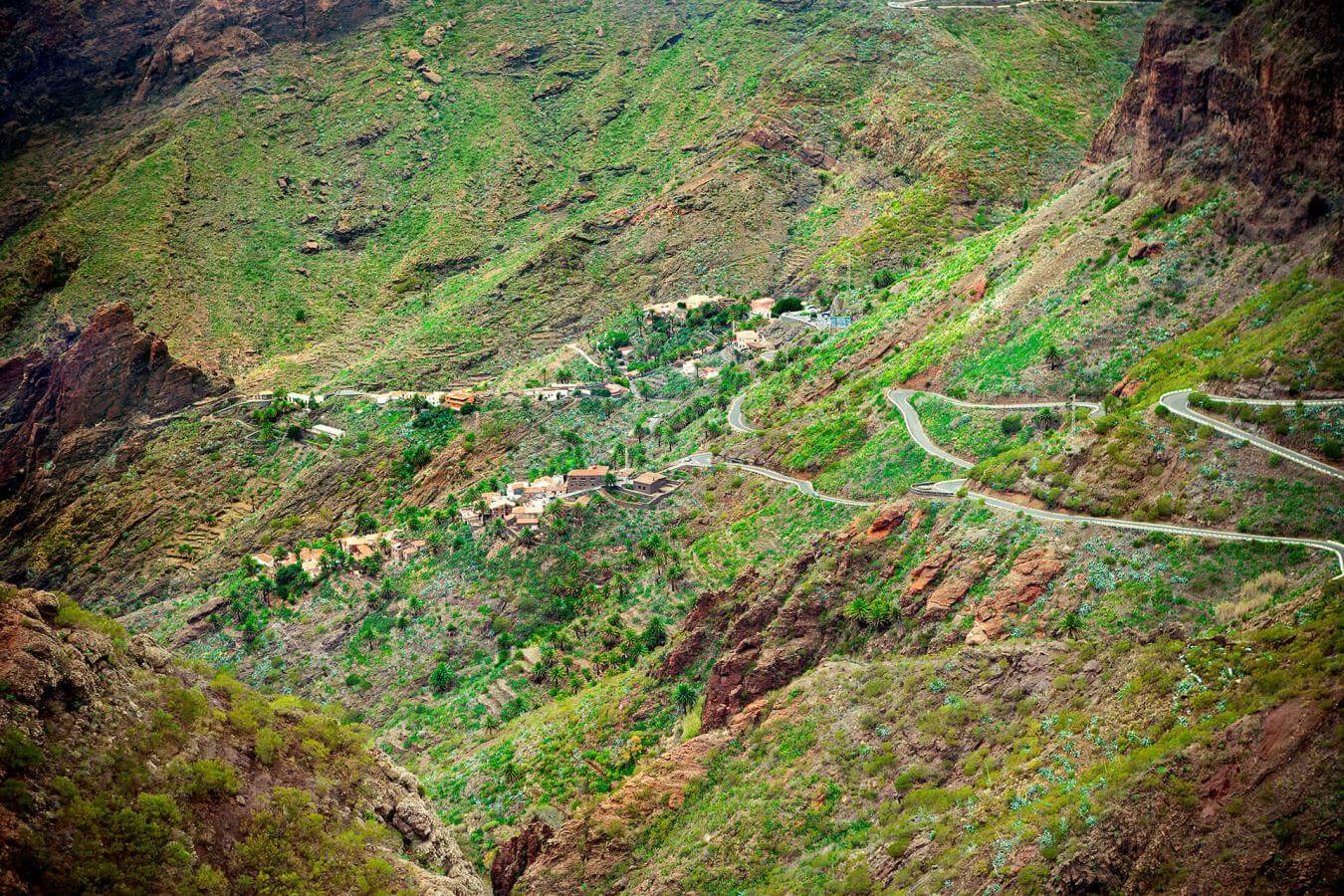

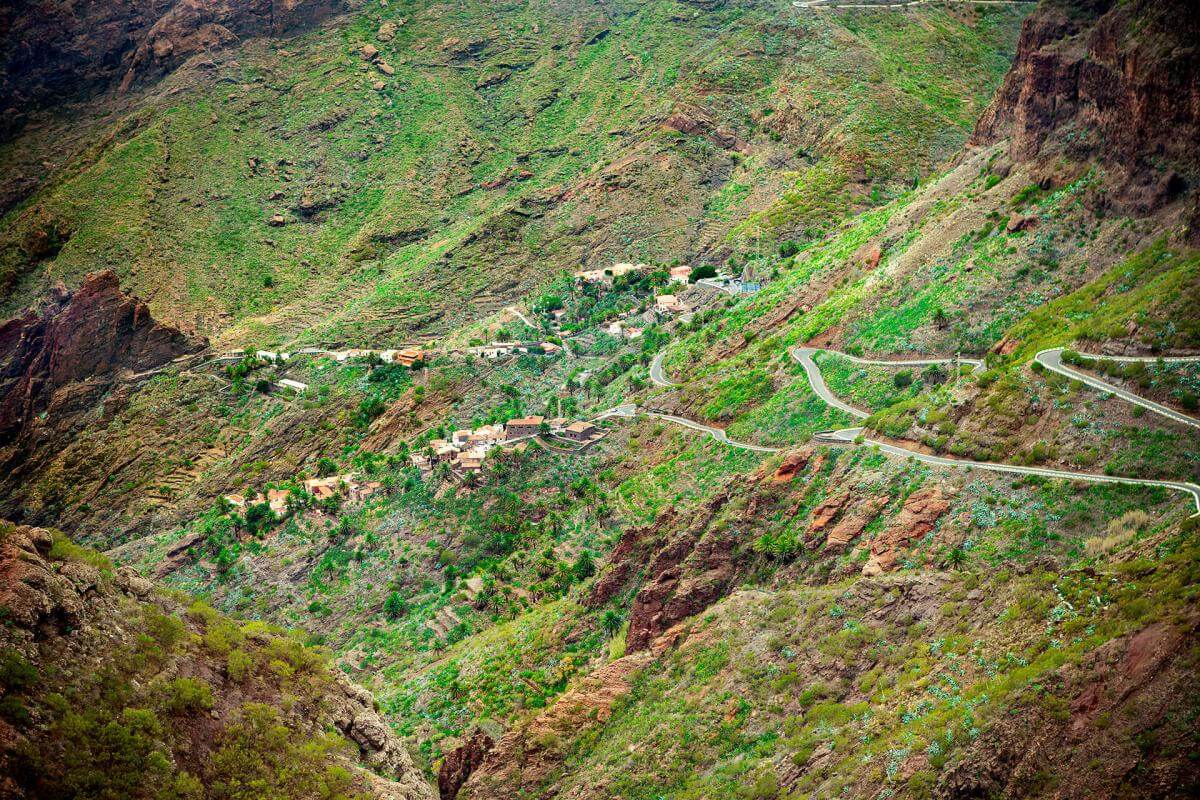
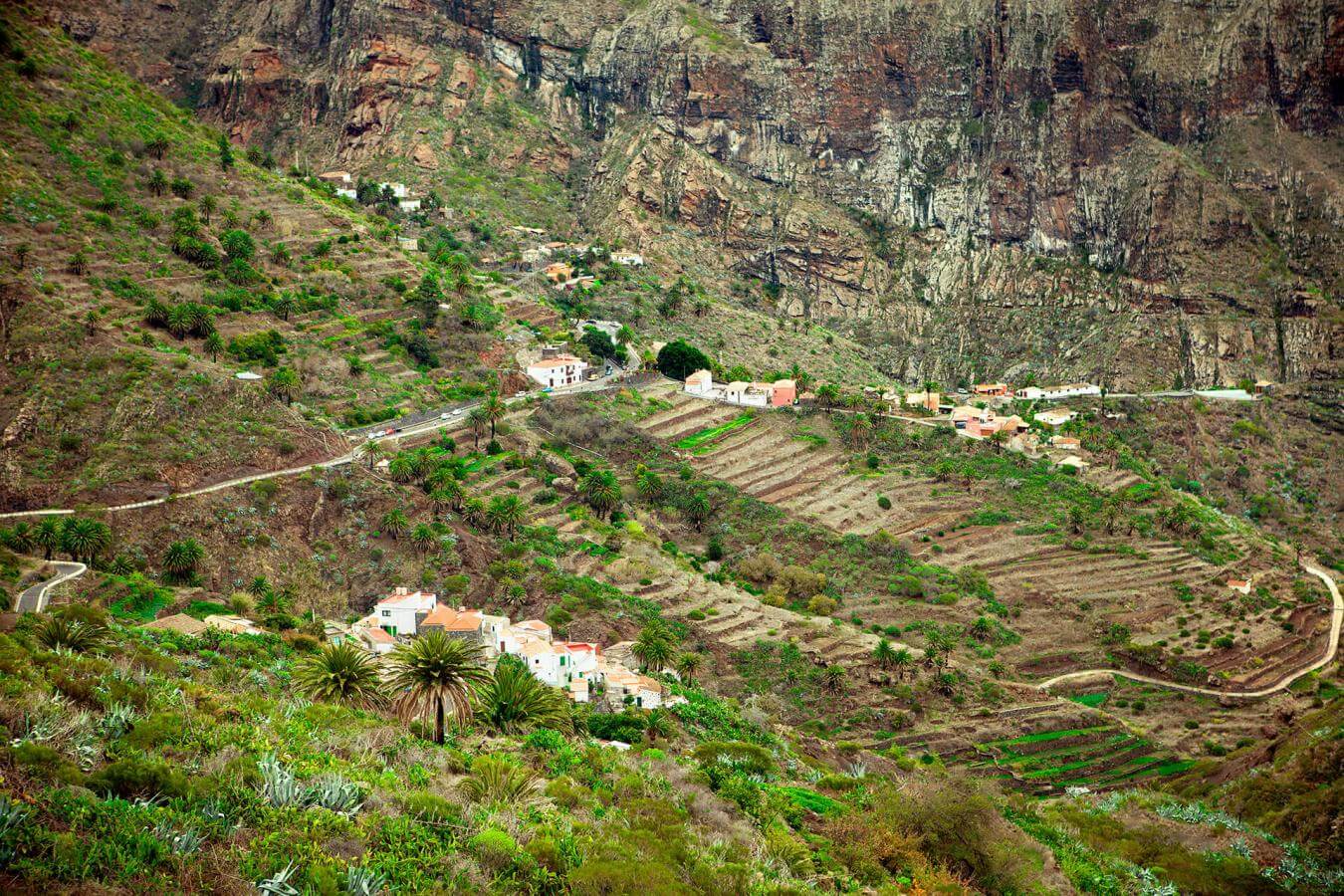

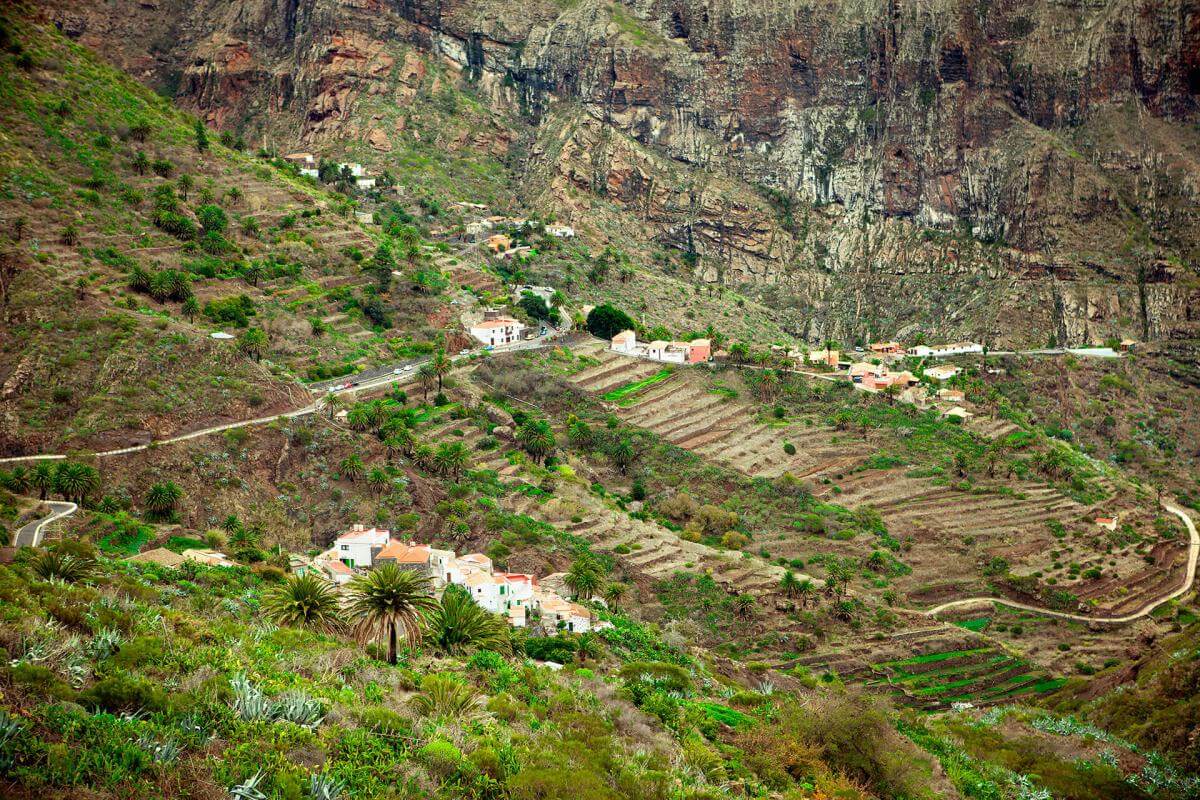
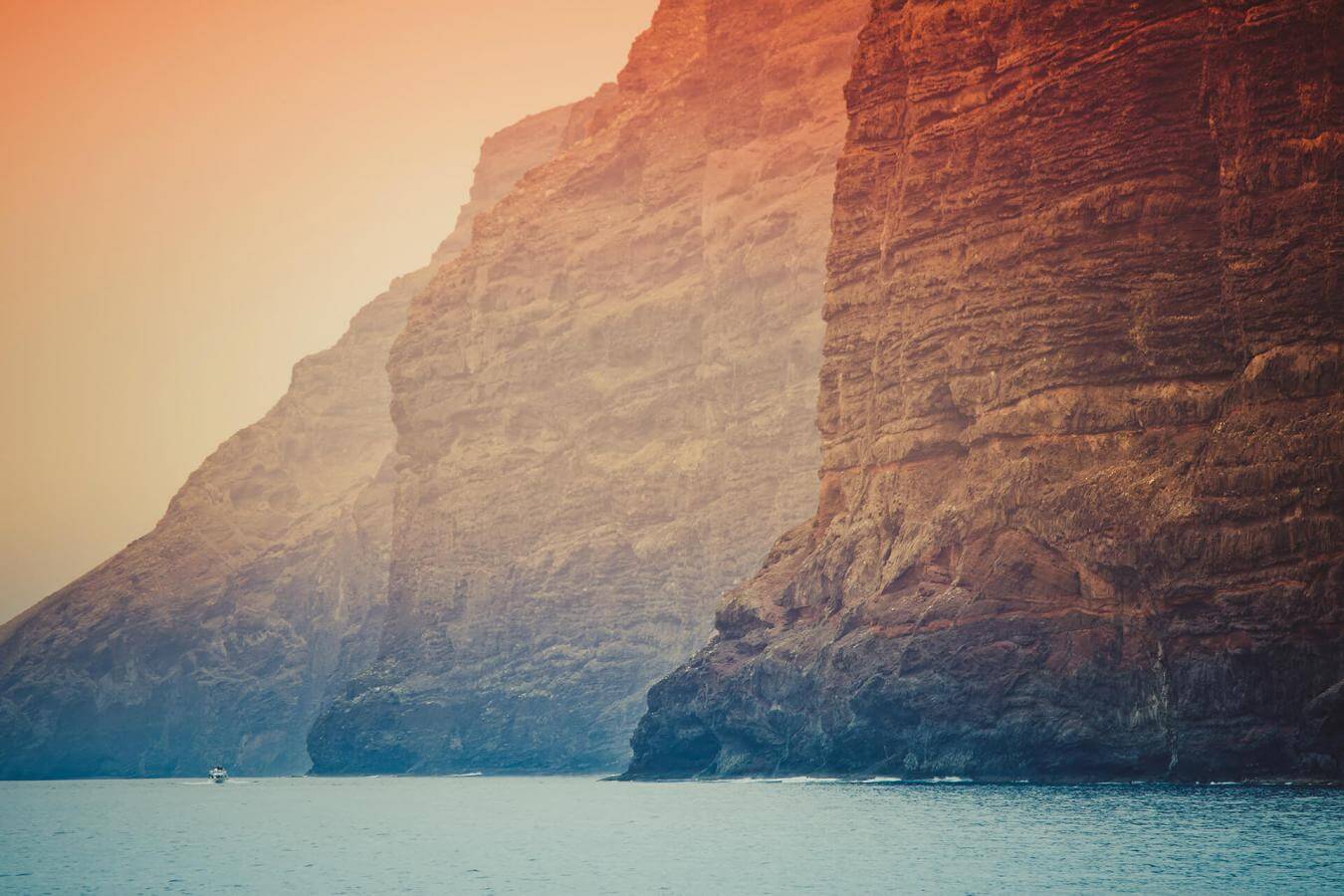



Information about Teno Rural Park
A perfect day in Teno Rural Park begins in Los Pedregales Visitors Centre. Located in the heart of the delightful El Palmar valley along a road just off the TF-436, the centre is housed in a fabulous mansion with a tiled roof and a patio under a porch. Here someone will be on hand to help you plan your itinerary for the day. The panels and informative videos help tourists to better understand the beauty of the nature that awaits them outside.
Those who want to discover the park on foot can use the visit to book a place on a route with one of the park guides. There is also the chance to pick up local products such as honey or Teno saffron. Less than one kilometre from the centre is the Los Pedregales recreation area and camping zone, perfect for a picnic or staying overnight in a tent. And if you visit on a Sunday you can also stroll around the farmer's market next to the visitors centre.
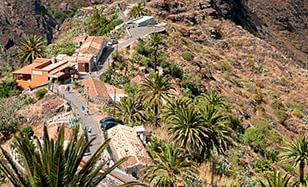
Traditional houses on the edge of a ravine in Teno
Masca is, without doubt, the best-known and most visited village in Teno Rural Park. Its few houses are home to about 100 people and stand in a V shape around a deep ravine in the peaks of Teno, in the west of Tenerife. The huge cliffs with dramatic angles that circle the area make the visitor feel they are light years away from the rat race and from everyday worries.
The architecture of the houses in Masca houses is simple and charming, with gable tiled roofs, thick basalt and mortar walls, and strong wooden doors. It’s definitely worth visiting the small 18th Century chapel in La Piedra and the restaurants serving typical Canarian dishes. The hamlet is also the starting point for a trek down the ravine, starting at 726 metres altitude and winding 4.5 kilometres down to the sea.

Stone houses at the summit of a rural park
Teno Alto is a mountainous hamlet perched on the top of Tenerife’s easternmost peninsula, in Teno Rural Park. Once you have arrived by car along the road that climbs up from the town of El Palmar, you will come across a delightful group of old houses with tiled roofs and stone walls painted white and mustard. The hamlet is nestled between green flanks of cultivated lands where you will also see goats and sheep being herded.
An excellent alternative route to reach Teno Alto is along the Callejón de Teno path, which begins close to the Los Pedregales Visitors Centre in El Palmar and climbs upwards along a five-kilometre paved path. On arriving at Los Bailaderos, visitors can reward themselves with a dish of delicious goat’s meat, cheese and local wines, or buy a bag of gofío; the Canarian toasted milled cereal.

Flora and fauna of Tenerife’s mountains
The Teno Rural Park is covered with a lush green carpet that is full of biological riches. This blanket, which sweeps down from the summit of this mountainous peninsula in the west of Tenerife to the coastline, offers an interesting display of vegetation: candelabra-shaped plant bushes that have adapted to the desert-type conditions; humid laurel forests, heather forests with trees of up to 15 metres high, and vertical gardens of cliff-loving flora, which grows up the craggy rock faces.
The interesting plant mosaic is home to many fascinating species of fauna including some rare types such as the osprey, the giant Teno lizard and a huge variety of insects such as shiny, multi-coloured beetles, many of which are only found in this corner of the world. And don’t forget that the area of the ocean that borders the base of this park is home to resident populations of playful dolphins and elegant pilot whales.
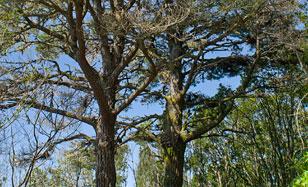
One of the best laurel forests in Tenerife
Millions of years ago, glacier activity and other climatic changes eliminated a large part of the laurel forests that covered huge swathes of the planet. However the island of Tenerife was spared. Because of this, in the Teno Rural Park in west Tenerife, you will discover an excellent example of an evergreen jungle covered with lichens, mosses and bushes, which looks for all the world like a scene from a wildlife documentary before the great floods. This is the famous Monte del Agua, or Water Mountain.
This legendary humid forest is nestled between the highest slopes of the Teno Mountains, and to reach its interior you need to go by foot. The PR-TF 52 path, 2.5 kilometres long, which connects the villages of Las Portelas and Erjos, is one of the best trails for exploring the area. If you have a guide book on Canarian plant and wildlife you will be able to identify many of the trees such as the viñátigo and aceviño (endemic laurel species) or spot the difference between the rabiche and turqué pigeons.
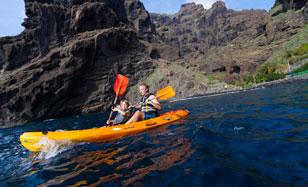
Water sports beside the cliffs of Los Gigantes
Although Teno Rural Park doesn't include the sea surrounding it, it does contain one of the most spectacular coastal formations of the Canary Islands: the cliffs of Los Gigantes. This coastal amphitheatre 2.5 kilometres across, formed by vertical walls of volcanic rock that reach 600 metres high make up the southernmost part of the rural park, in the west of Tenerife. Doing any kind of water sport with these cliffs as your backdrop is an absolute luxury.
From the harbour in the nearby tourist resort of Los Gigantes there are guided kayak tours, paddle boarding and scuba diving lessons, which explore the blue waters of the mighty cliffs. Here too, all year round, live pods of bottle-nose dolphins and tropical pilot whales and you can also catch sight of orcas and blue whales during their migrations.
Excursions along the coast in sail or motor boats also leave from Los Gigantes harbour. If the sea allows it, visitors are taken to discover the beautiful, isolated beach at Masca.

Explore the culture of Teno’s villages
The mountains and valleys in the Teno Rural Park still conserve many traditions; traditions that have sustained and given work to the population of this rural community. By walking around the villages, stopping of in the markets and shops and talking to locals, visitors can learn more about the simple lifestyle that keeps the inhabitants in touch with the earth that feeds them.
Gastronomically, Teno is famous for its potatoes and gofio (a Canarian flour made from toasted cereals). People also praise the local saffron, goat and sheep cheeses and, of course, the excellent traditional desserts and pastries. Two surprising cultural treasures are, for instance, the technique used by shepherds to move their way down the almost vertical mountain sides, known as the Salto del Pastor (Shepherd’s Leap), and the syncopated style of music called tajaraste of Teno Alto, which is danced by groups dressed in traditional costumes.
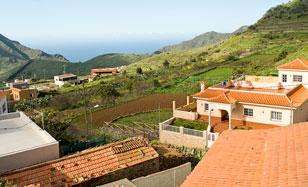
Where to stay in Teno Rural Park
Teno Rural Park needs more than a day to properly explore its nature, landscapes and its traditions. There are two options for overnight stays in this western peninsula of Tenerife. On the one hand there are many private rural homes spread around the park, or your can stay in the superb state-run forest refuge, known as the Bolico Hostel.
If you are looking for peace and solitude the better option is to book a rural house. Many of these are old homes situated in the middle of the countryside or in the mountains, with rustic finishes such as volcanic stone walls, tiled roofs and solid wooden doors. If you fancy a more social experience, you can stay at the Bolico hostel, located on the outskirts of the village of Las Portelas. There are single fooms and dormitories to choose from, and you will find information about guided walks etc at the reception.
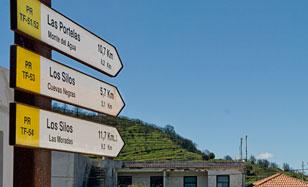
Hiking in Teno Rural Park
The pleasant climate and beauty of the landscape found at Teno Rural Park invite you to put on your walking boots, grab your back-pack and head out to explore these mountains in the west of Tenerife. This is one of the best signposted and well-maintained set of nature trails on the island; there are 10 free paths, two self-guided walks and one narrated guided trail. A good place to start your day and to get information on all of the routes available is the Los Pedregales visitors centre.
The central axis of this network of trails is the PR-TF 51, in the village of San José de Los Llanos in La Punta de Teno (the easternmost point of Tenerife). Its 14 kilometres criss-cross the park from east to west along the dorsal ridge. Another popular walk is the self-guided PR-TF 53, which connects Erjos and Los Silos via a spectacular descent, with views over the northern section of Isla Baja; a vast coastal plain area full of banana plantations.
- Never leave waste of any type lying around, including cigarette butts. Leftover food leads to a proliferation of rats and wild cats, which pose a serious threat to the fauna.
- Respect the animals. Do not bother them or feed them. If you see an injured specimen, you can call the emergency number: 112. Do not pick flowers or plants.
- Do not pick up or take away stones or any other item from the natural environment. And do not move them to pile them up into sadly famous 'towers'.
- Do not walk in areas where it is not allowed and respect the signposting along trails. Leaving the set paths causes damage to the environment and could also be dangerous for you and anyone with you.
- Do not light fires outside the permitted areas and be especially careful during the summer months.
- Try not to alter the peace of the environment with excessive noise (loud music, yelling, etc.).


